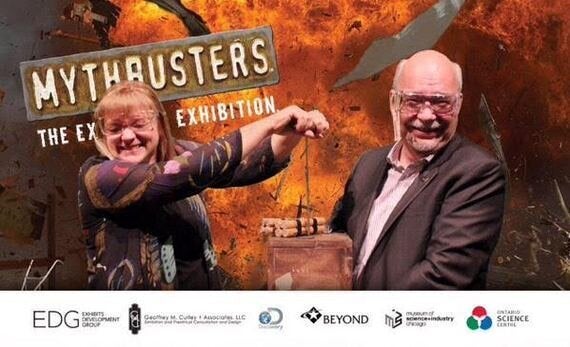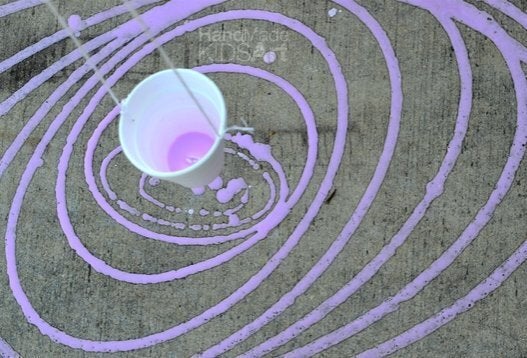
With contributions by Dr. Victoria Metcalf, national coordinator for the Participatory Science Platform in the Office of the Prime Minister's Chief Science Advisor in New Zealand.
Everyone has a budding inner scientist with natural curiosity about the world. Science offers a way to find answers to the questions we had as kids and may still have as adults.
Helping kids nurture their inner scientist and encouraging them to develop the skills needed to investigate and understand the world around them will help them become scientifically literate adults. The world that our children will be inheriting from us faces major challenges, such as climate change, environmental degradation and increased urbanization. The solutions to many of those challenges will require evidence-based approaches, which are a consequence of STEM (science, technology, engineering, math), combined with innovation, creativity and teamwork.
The public today is routinely bombarded with information that may or may not be scientifically valid. Sources of misinformation can be loud, misleading and confusing. Scientific literacy is key to ensuring strong public understanding and healthy debates about everything from GMO foods to climate change. Being able to distinguish solid, scientifically valid information from inaccurate or even potentially harmful information is increasingly important.
But how do we normalize science and build confidence and scientific literacy in everyone? How do we help the public, both adults and kids, find and nurture their inner scientist?
1. Making Science Fun
Making science fun and accessible through a public forum normalizes science for kids and adults. Mythbusters, the wildly popular and Emmy-nominated TV show on the Discovery Channel, demonstrates the scientific method in a fun and usually explosive way (don't try this at home!). As a parent, I've seen how Mythbusters has normalized scientific investigation for my pre-teen kids and made "figuring things out" entertaining. Mythbusters has now become a travelling exhibit and is available for the general public to experience in Toronto until September 13 at the Ontario Science Centre, with the support of Ryerson University as academic partner.

Mythbusters, now a travelling exhibit at the Ontario Science Centre, makes science fun and accessible for both kids and adults. (Photo: Ontario Science Centre)
Two other Canadian-based science outreach initiatives are Science Rendezvous, a festival that takes "science out of the lab and onto the street," and Let's Talk Science, a national charitable organization that brings science to youth.
2. Making Science a National Priority
In Canada, we need to make scientific literacy and communication a national priority. We can start by following the example of Europe and some Commonwealth countries, where science communication is valued as an important academic endeavour.
For instance, in the UK, Soapbox Science follows the format of London Hyde Park's Speaker's Corner, historically known for public debate, and promotes female scientists from various universities, who share their work with the public by going out into the community.
In New Zealand, a progressive government recognizes that a scientifically engaged society helps build a better nation. To that effect, the government released in July 2014 "A Nation of Curious Minds," a strategic blueprint for its new initiative, the Science in Society project. This initiative consists of innovative actions to raise scientific literacy. The project aims at raising "our 'science capital', a somewhat esoteric concept, that dispels the notion that science is equated with only scientists. It's about building knowledge networks," said Dr. Victoria Metcalf, national coordinator for the Participatory Science Platform in the Office of the Prime Minister's Chief Science Advisor in New Zealand.
In Australia, the government supports Science in Public, an initiative that allows scientists and science organizations to present their ideas in public. Similar to New Zealand and the UK, the Australian government recognizes the value of increasing public engagement and interest in science, which has led to the Inspiring Australia strategy.
In the United States, eminent actor Alan Alda has helped scientists learn to tell their stories at the Alan Alda Center for Communicating Science.
3. STEM to STEAM
Another way to build scientific literacy is to recognize the importance of the arts and humanities as drivers of creativity for scientific and technological innovation and as vehicles for communicating science.
Moving the discussion from STEM to STEAM, where arts are included in the mix, adds great value. As Maya Angelou said, "You can't use up creativity, the more you use, the more you have."
Bringing highly creative disciplines together with science and engineering can lead to innovative outcomes. Over 100 years ago, the Catalan architect Anton Gaudi was inspired by nature and biology to design fantastical yet functional buildings "which bring the science right into the very framework of the buildings." More recently, the worlds of fashion and science have come together in initiatives such as Descience, a collaborative program in which "scientific discovery offers inspiration for the innovative minds of fashion designers." For example, Cytocouture is inspired by imagery of "microscopic endothelial cells, resulting in textures and garments that remind us of the connection between living tissue and the textiles we use to protect our bodies and display our identity."
4. Bridging the Research Gap
Showing how scientific research is relevant and useful to the public increases the value of that work and makes it all the more impactful. "Discussing my research with people from a variety of different backgrounds has helped me to clarify my arguments, and uncovered some assumptions and biases in my thinking," said biologist Angela Crean who recently shared the findings of her study on inheritance pattern. She also discovered that many people are actively seeking answers to satisfy their inner scientist.
As scientists and academics, we have a responsibility to ensure that the public understands the relevance and importance of science in day-to-day life. We need to normalize the scientific process and build confidence in everyone to enable them to engage and nurture their inner scientist.
ALSO ON HUFFPOST:
